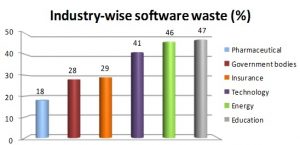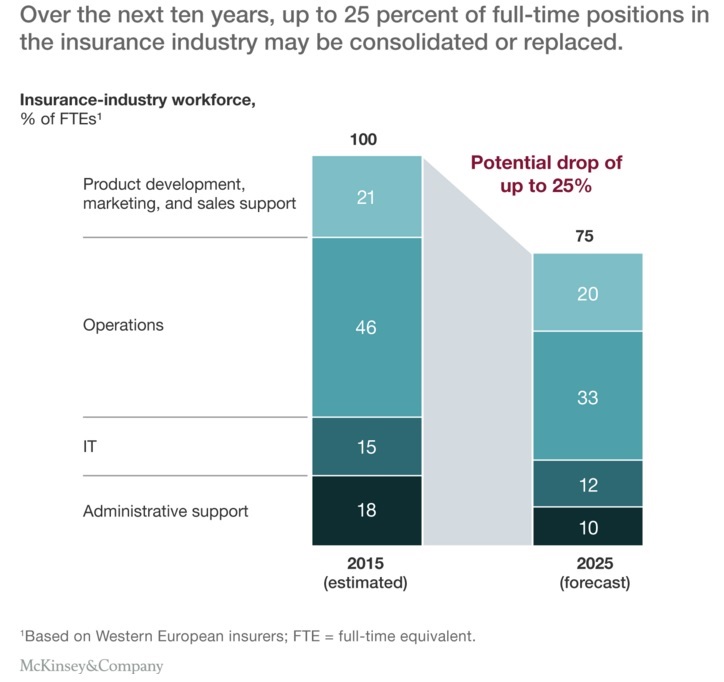“Usain Bolt #JAM wins track and field gold in men’s 100m, beating Justin Gatlin #USA Reminder: Athletics men’s 100m final starts in 15 minutes. Streaming at http://NBCOlympics.com.“

These are just a couple of tweets providing an update on the Rio Olympics, generated by the Washington Post’s new ‘journalist’ you won’t see with a pen and a notepad. Meet Heliograf, the bot that runs on AI technology, that’s made it to the headlines even before it debuted at the Olympics to provide extensively automated, almost real-time coverage on the broadcaster’s Twitter and Facebook channels and website, and the reports and analysis fed to ‘flesh and blood’ reporters to flesh out blogs and news stories. Going forward, Heliograf is all set to provide unmatched coverage of over 500 races during the upcoming US Presidential elections in November 2016. While it’s a leap in journalism, it’s a way to free up the journalists so they can get down to doing what they can do best, which is great journalism. Janelle Hill of Gartner clarifies that it’s not about taking people out of the process but getting them back to doing what they are good at.
What’s next with automation?
The Boston Consulting Group estimates that robots now perform 10% of the manufacturing tasks that machines can do. They predict that this figure will rise to 25% by 2025.
McKinsey & Company estimates that if automation were to reach its optimal level of adoption, then half of all FTEs working in back-office operations would not be required anymore. The McKinsey Global Institute places ‘automation of knowledge work’ at second place on their list of disruptive technologies that are believed to drive the change in business operations by 2025. And it’s because of automation that over 100 million jobs won’t be around by then. Here’s the kind of optimal staffing that they see in the insurance industry:

It estimates that one-third or more of all the existing work tasks performed for 60% of all US jobs can be automated with existing technologies. And by 2020, 85% of the relationship that customers manage with businesses will happen without interacting with a human.
“Now, the world is moving towards the next stage of the industrial revolution, where the focus is on building a new generation of cyber-physical systems that improve productivity by delivering fully connected, intelligent manufacturing systems capable of supporting high levels of customization, flexibility, and end-to-end manufacturing process automation.” – marketsandmarkets.com
Research giant Gartner elaborates: Automation improves accountability, efficiency, and predictability while reducing cost, variability, and risk. By 2017, around 75% of businesses will be powered by more than four diverse automation technologies, up from just 20% in 2014. And by 2018, 20% of all business content will be authored by a machine, displacing job positions of several writers.
Automate or perish?
Chances are that most of the applications you need on a daily basis to get your work done efficiently will not talk to your legacy systems, and point-to-point integration is not a sustainable solution for the long-term because it doesn’t allow scalability. So if you feel weighed down by regulatory compliance tasks, voluminous file transfers, lengthy onboarding, and off-boarding practices, or any kind of inefficient routine process that you know is necessary but doesn’t justify the cost, and realize that these stand in the way of achieving your enterprise mission and vision, you would worry about how you are going to guard the distance between you and your competitors.
Begin by automating just one process and notice the difference it makes to the choked bandwidth, efficiency, and costs. A payback period of just a year would make it easy to justify further investment into automating other processes. Enterprises big and small, the world over have saved double-digit man-hours per month per employee, reduced costs, improved job satisfaction levels, achieved the scale of operations, and have become competitively agile, efficient and lean with automation. If your competitors are doing it with automation, there’s hardly a chance you will match up without following suit.
Let’s now see how specific departments within an organization can take advantage of automation.
-
IT Services
The Computer Weekly states that “IT departments spend 30% of their time carrying out basic tasks, and are growing frustrated with the lack of time available to focus on transformational work”. A recent study reveals that more than a third of all software purchases in a business go unused, leading to $30 billion being wasted each year in the U.S. alone, or about $259 per computer machine. CIO Insight estimates the following levels of software wastage in various industries:
 Saving by removing unwanted software is only part of the story. When you automate the process to remove software sprawl, not only do you gain from the financial benefit accrued through accurate identification and removal of unused software, but its automated technique helps businesses keep pace with the digital change. It tightens security, saves time and energy to patch, saves overall costs, and frees up the bandwidth of IT professionals, helping them to focus on high-value projects. The Technology Solutions Group at HP holds the view that automation technology allows you to map just one technician to 200 servers, as against just 20 in the absence of automation.
Saving by removing unwanted software is only part of the story. When you automate the process to remove software sprawl, not only do you gain from the financial benefit accrued through accurate identification and removal of unused software, but its automated technique helps businesses keep pace with the digital change. It tightens security, saves time and energy to patch, saves overall costs, and frees up the bandwidth of IT professionals, helping them to focus on high-value projects. The Technology Solutions Group at HP holds the view that automation technology allows you to map just one technician to 200 servers, as against just 20 in the absence of automation.
Using an automated endpoint solution, IT teams can build, rebuild, patch, upgrade and manage PCs easily without disruption in the fastest way possible, making them available when they are needed, allowing them to be more responsive to the needs of the business and its users. A fully automated service delivery through SCCM eliminates manual effort and accelerates processes. Automation can also help in reducing both downtimes as well as Mean Time To Restore (MTTR). Some enterprises are also using automated programming for testing and in techniques that help in scaffolding in MVC frameworks. McKinsey states banks have the potential to generate an improvement of more than 50% in productivity and customer service if they deploy IT solutions and automated processes.
-
Human Resources
A study conducted by PwC revealed that on an average, direct HR costs account for 28% of overall operating expenses in a business. In a research report, Ed Lawler and John Boudreau from the Center of Effective Organizations, state that over half the time spent by a human resources department is consumed in activities related to processing employee information and answering employee questions. The department can automate the hiring process, and tasks linked to taxes and payroll, employment benefits, insurance, and compliance.
The Arizona Department of Administration stands testimony to the benefits of automation. Their agency human resources staff was earlier spending undue time carrying out employment verifications. Through automation, the state successfully dispensed with 6,700 hours of lost productivity and achieved cost savings of over $165,000 annually.
-
Finance teams
This department lends itself to adopting significant levels of automation. Corroborating this, researchers at Oxford University and consultants Deloitte, predict that based on the nature of work and the technological headway in machine intelligence, charted accountants face a 95% chance of being replaced by some form of automation in the next 20 years. Automation solutions in the market claim to decrease manual effort by 90%, improve the time to financial reporting by 70%, and increase the number of books closed each month from 10 to hundreds, with just 20% of existing resources.
- Marketing
Today, we see more instances of marketing automation than ever before. McKinsey remarks that activities that take up 10% to 15% of a marketing executive’s time can be automated through already existing solutions. A recent article on HBR shows that 85% of the activities performed by a salesperson have the potential to be automated using existing technologies. An article on Emailmonday reveals that 49% of businesses are already using some form of marketing automation, with 55% of all B2B companies adopting it. According to MarketingSherpa, 54% of CMOs have either begun or completed marketing automation at their workplaces.
-
Manufacturing
The manufacturing sector is set for a new revolution brought about by automated systems, leading to smarter factories. Packaging can take up 10% to 35% of the expenses pie pertaining to the operational throughput of a processing plant. A poultry business that introduced automation benefited from significant savings, higher packaging speed, and enhancements in product quality while reducing rework from around 12% to just 2%.
The beauty of automation is that you can start in a small way and still benefit. Even if it helps save 20% of employee time on a daily basis, for a team of 30 professionals, this adds up to the equivalent of the cost of one additional hire, which you can easily save. In fact, the cost of shying away from automation may be far more than adopting it.
